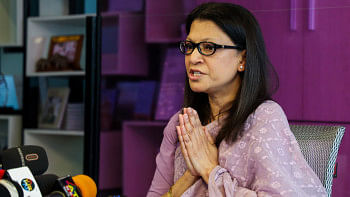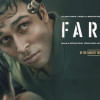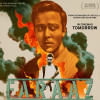Is ‘Faraaz’ just another movie?

The answer is a "yes" and a "no." Yes, it's just another movie that will lose significance as soon as a few weeks go by. Then again, it's not "just another'' movie. It is a lesson in horrific storytelling that revisits wounds that still bleed at the mention.
The Holey Artisan terror attack was a tragedy that many of us grew up with and lost our innocence to. There is merit in asking whether an Indian filmmaker, with no connection to Dhaka, had any right to recount the story that impacted thousands of lives he will likely never meet. Further, one must contextualise the movie to where it's being released – India, a country that remains largely polarised with a populist government using Hindutva to persecute minority Muslims. Despite it not being director Hansal Mehta's intention, it will play into the Indian government's narrative that Muslims are the ideological, and perhaps geographical, "other." In times like these, we should remember that everything is political, and the inherent fear of the "other" will likely propel ticket sales to Faraaz, feeding existing biases.
One can also wonder if the art is accommodating the victims and not turning their grief into a battering ram for box office profits. If we dissect similar instances in the West, a slate of 9/11 documentaries and archival movies – especially in the first five years after the tragic incident – moved forward with the blessings of the victims' families. Many directors noted that they would not have commenced work had the families objected to how the story was focusing on the truth, contributing to its enduring legacy.
In general, it's common for filmmakers to seek the consent of individuals or families who are depicted in films based on real-life events, especially if the portrayal could be seen as (in)sensitive or controversial. Mehta has had a long-standing reputation of doing autobiographical films, which, frankly, he has executed well. In Shahid (2013), he bases the film on the life of human rights lawyer and activist Shahid Azmi. Aligarh (2016) was a film inspired by the real-life incident of Dr Shrinivas Siras, a professor who was suspended from his job because of his sexual orientation. Then in 2020 came Scam 1992, a web series based on the life of stockbroker Harshad Mehta and his involvement in the securities scam of 1992, and Chhalaang, a sports drama film inspired by the true story of a physical training instructor in a government school.
How is it that such a seasoned director did not seek consent from the victims' families when making Faraaz? Ruba Ahmed, mother of Abinta Kabir, one of the victims of the Holey Artisan attack, filed a case just before the pandemic to stop the movie. When no word was heard on the film's production, she breathed a sigh of relief, knowing she wouldn't have to revisit the trauma of losing her daughter on the big screen. Then two years went by and Mehta emerged with a fully finished film. There were hardly any promotions or campaigns last year, which was odd, given that's what one would typically expect before a film's release. Why this secrecy? The director's general disregard of the victims' families' emotions puts into question the extent of sensibility he might have applied into making the film itself.
In this regard, Ruba Ahmed's arguments against Mehta strikes the most relevance, "Nobody knew what happened behind those doors, nor can anyone tell what happened." To pick and choose a hero and then highlight that speck of heroism as the most significant aspect in a hostage situation is probably not the most sensitive or sensible act that one could've expected from a veteran director.
There's also the question of how the attackers will be represented. One of the attackers was a student of a private university in Bangladesh, who later transferred to Malaysia, where he was likely radicalised. After the media revealed his face to the public, many in Dhaka were in denial and shock, either for knowing him personally or knowing of his life's priorities even days before his unexplained disappearance.
He used to be another regular guy with mundane Monday problems, and with the English Premier League dominating his world. On the verge of his graduation, when he was supposed to be worried about his midterms and securing a job, how was it that he found himself worried about waging a "religious war"?
While the Holey Artisan attack reduced him to just another statistic, forever painting him and – just by virtue of association – his family as the "inherent evil," it will not be unreasonable to expect pop culture to represent him and his surroundings in a way that represents all of us. For this attacker, too, was once one of us, before radicalisation put a wolf's teeth in that lonely boy. Can an Indian filmmaker, making the first move on this story, go in-depth into the character of urban radicalisation that underpinned IS' prime recruitment strategy in Bangladesh? Or will he dilute it with a trailer and dialogues that sound reminiscent of Pakistani soldiers in movies like Border or Lakshya?
These cultural and community intricacies bear significant weight on projects such as these, galvanising more support for local productions to tackle local stories of seismic proportions. Not addressing these wounds not only tells a one-sided story, but also disrespects families who neither had anything to do with the attackers' radicalisation, nor had any idea what really went down below.
However, there is a greater analysis of fear that becomes pertinent every time a terror attack is commercialised for profit. While pop culture invests its energy and big dimes into the representation of conquering fear, terrorism – and its enduring legacies – are different.
It's more than just enhancing and enabling stereotypes – it's about how terrorists actively work to create their identity through violence. Any social response that is mildly aggressive only feeds into their ideology, creating a never-ending, vicious cycle that breeds radicalisation, especially when terrorist activities are low.
It is not pop culture's responsibility to rehabilitate the image of terrorists, radicals or religious fanatics. But when movies commercialise traumatic and culturally significant events like the Holey Artisan attack, the onus shifts on the filmmakers to introduce a humanising force that unites everyone in grief, pain and disagreement, while simultaneously restoring dignity by leveraging the truth in storytelling. Else, we keep our societies open to the enduring pedagogy of fear – instead of unity – furthering social polarity and the fear-based cognitive dissonance that does more net harm. Will Faraaz and Saturday Afternoon end up causing more harm commercialising trauma? Only time can tell.
What can be said for certain is that there is something like "too soon," and there definitely is a wrong way to tell a story. But with meticulous research, one can separate the truth from political fiction, and bring comfort to a varied demographic reliving their trauma while they watch it on a big screen. So, if the question is, can artists explore culturally traumatising events? Absolutely; creative avenues should be afforded to filmmakers who exercise the highest care to craft stories that hold up to the standards, and it is not a process previously unheard of. Many victim families opposed movies regarding the Boston Marathon bombing of 2013, but eventually agreed to the production once they were made privy to the research process, and when the plot and the sub-plots avoided significant dramatisation of events to protect the sanctity of lives lost.
Popular culture's representation of these events helps narrate micro-stories that often don't see the light of day. It's not just a simple conversation about freedom of speech – all the information is out there for any keen person to view. But it's about piecing all that information together to present valuable insights about an event that had ground-breaking significance to you, your family, your culture, your ambitions, and your future.
AM Hassan is a security researcher.
Nazifa Raidah is a sub-editor at The Daily Star.

 For all latest news, follow The Daily Star's Google News channel.
For all latest news, follow The Daily Star's Google News channel. 









Comments